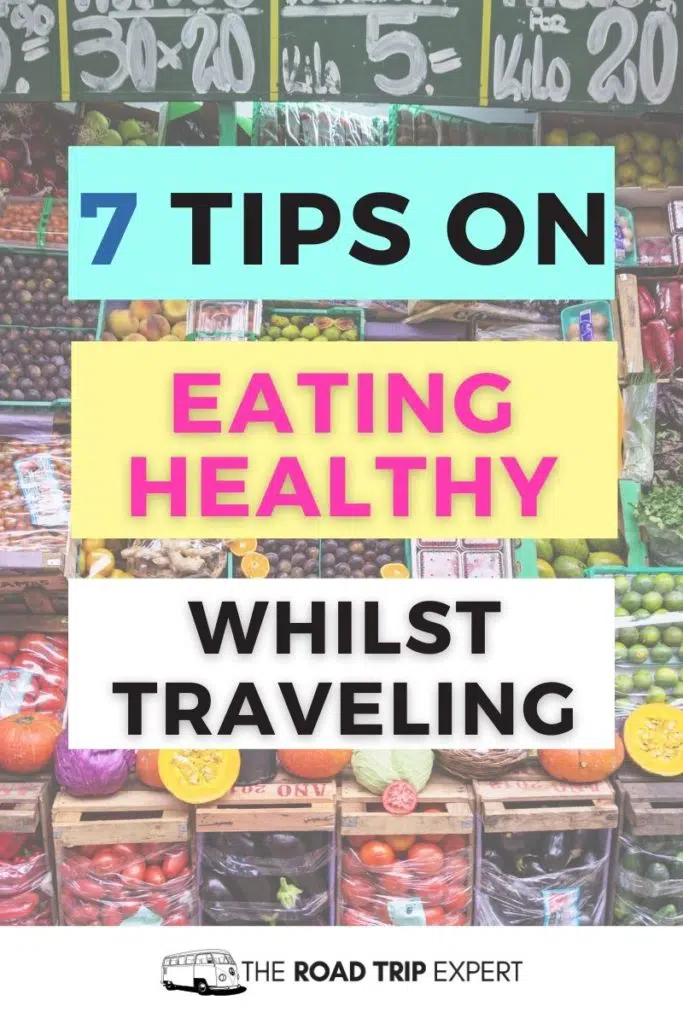It can be difficult to eat healthy while traveling, especially on a fast-paced adventure abroad, with limited food options. Even the most experienced globetrotters among us would admit that it’s a challenge to stay on top of your diet whilst away.
Challenge accepted!
The key is to plan ahead, stay disciplined and pick foods that are easily available, easily prepared, and packed with fiber and nutrients!
Even though it’s a challenge, the juice is worth the squeeze. Eating healthy while traveling will ensure you feel energized and engaged in all the activities you are doing. A hearty breakfast and nutritious lunch will help you avoid the dreaded mid-afternoon energy slump!
In this article, I’m going to tell you exactly how to do this with 7 tips, tricks, and hacks that really work.
Affiliate Disclosure: Thank you for supporting The Road Trip Expert. When you purchase through links on this site, we may earn an affiliate commission. Please see our advertising disclosure for more details.
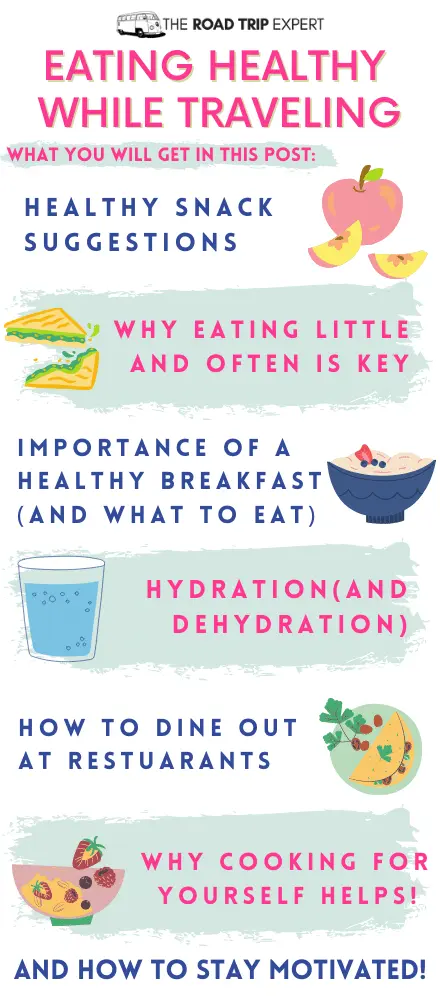
How to Eat Healthy While Traveling: I Learned The Hard Way

I’ve traveled a lot over the last few years. As someone who likes to stay healthy and maintain a balanced diet at home, I assumed I would be able to continue this on the road.
I soon found out that it’s far too easy to get caught up in the exciting whirlwind of travel and to begin to neglect your diet. Especially when ingredients, free time, and access to a kitchen are hard to come by.
Over time I developed some tricks to eat healthy while traveling which you can consider when you plan your trip. Let’s get stuck in with these easy healthy eating travel tips.
1. Pack Healthy Snacks
Head to the grocery store before/during your trip with an extensive list of healthy snack options. I like to cram my backpack full!
This helps avoid salty and sugary snacks, save money, and take the first step toward eating healthy while traveling.
Which Snacks Should You Take?
Generally speaking, you should eat a healthy diet packed full of fruits, vegetables, and whole grains.
A diet rich in healthy fats, nutrients, fiber, and complex carbs will lead to steady energy release, good digestion, and healthy body function.
I’ve come up with a few options to get you started.
Non-Perishable Foods
Packaged or ‘non-perishable’ foods are excellent to take traveling, as they don’t require a refrigerator or cooler and there are plenty of healthy options.
- Nuts and seeds – nuts are high in protein and good fats and – as with the fruit and veggies – nice and easy to eat on the go. Avoid salted nuts!
- Dried fruit or fresh fruit kept cool.
- Apple slices with some peanut butter.
- Jerky – jerky is a great source of protein and easy to store as it doesn’t require refrigeration. You can often buy it in serving-sized packets.
- Protein bars/Granola bars/Whole wheat crackers/Rice cakes – all make great snacks.
- Cucumber/carrot slices with hummus ( often in convenience stores)
- Sandwiches made with wholegrain bread. avoid processed meats and cheese, opt for tuna mayo or crushed avocado and chickpea.
Healthy Foods That Require a Cooler
- Fruit and Veggies – pre-chop your fruit and veggies into bite-size chunks before you leave on your trip. That way they will be accessible and easy to eat. Berries are great as they’re already bitesize!
- Hard-boiled eggs.
- Salads containing grains and colorful veg.
Why take snacks?
With an armory of healthy snacks at your side, you can eat something nutritious every few hours.
When you’re excessively hungry, greasy and unhealthy food seems like a better option to your brain. Eating a healthy snack to keep hunger locked away is a great method for preventing this.
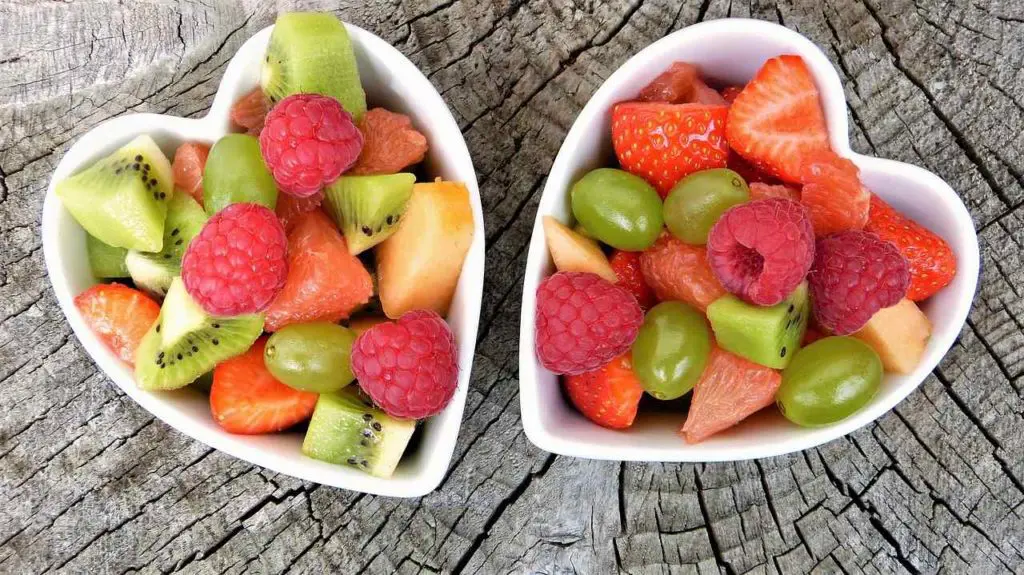
Taking a road trip? Check out our extensive article with a full list of healthy road trip food.
2. Eat Little and Often
Not eating for long periods of time (which is very easily done when on the move), is a recipe for making an unhealthy food choice. It’s when we’re at our hungriest that we are more likely to pick something unhealthy.
I can also say from my own experience that if I wait until I’m ravenous then I’m more likely to head for the fast-food counter.
Help Maintain a Stable Blood Sugar Level
According to WebMD, eating little and often (as long as it’s healthy food) keeps your metabolism working. It also helps keep your blood sugar level stable. This maintains constant energy levels and is good for overall health.
3. Eat (A Healthy) Breakfast
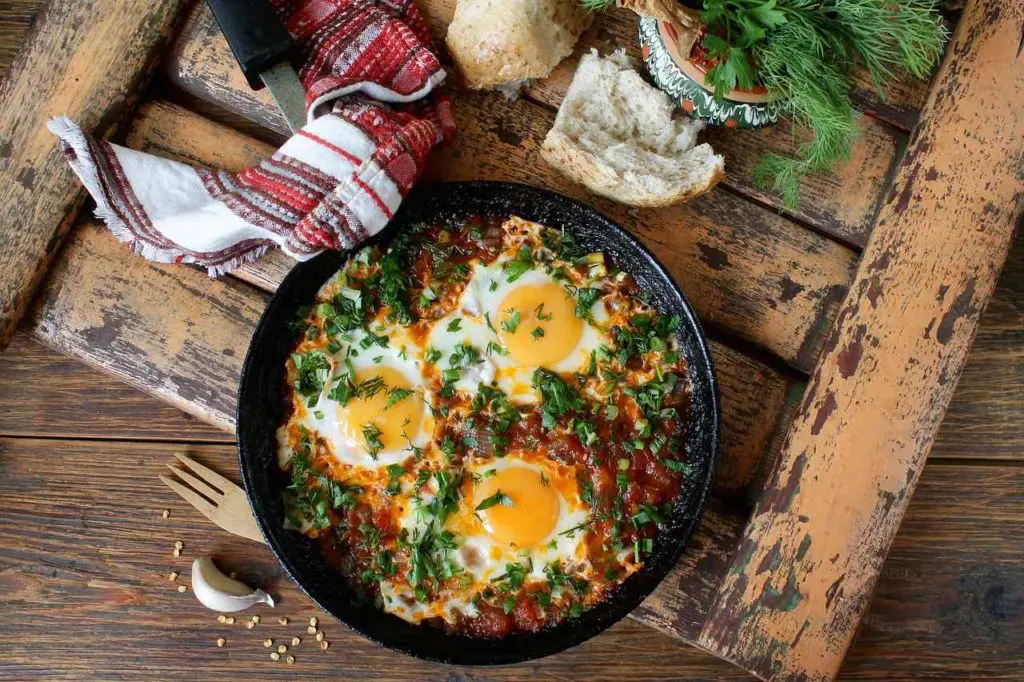
OK, you might be reading this thinking, well, duh? Who doesn’t eat breakfast? And if so, kudos to you.
However, many of us travelers often find it hard to cram in the time for breakfast. It’s far too easy to neglect this important meal when consumed with the chaos of travel.
As they say, breakfast is the most important meal of the day, so make the effort to eat a healthy option and start the day on the right track. This seriously helps in your quest to eat healthily while traveling.
The Benefit of Breakfast
WebMD tells us that breakfast gets your metabolism going and helps you to burn calories. What’s more, breakfast helps restore your blood sugar level (which your body needs to make your muscles and brain work) as this is usually low when you first wake up.
What to Eat for Breakfast
Avoid foods that are high in sugar and bad fats, such as donuts and muffins, regardless of how convenient they are. These types of foods won’t do you any good in your quest to maintain your healthy diet on the road.
A few easy breakfast examples to help you eat healthy while traveling:
- Porridge with fruit or a bit of honey
- Wholegrain toast with peanut butter and banana
- Wholegrain cereals that are high in fiber such as all-bran or shredded wheat.
- Baked beans on wholegrain toast ( get the low sugar/salt variety)
- Healthy granola with added nuts, almond/low-fat milk, and berries.
Booking Accommodation with Breakfast Included
Free breakfast makes a massive difference to the value of a hotel/hostel booking so always check if it’s included and try to start the day with a good meal.
Try to stay disciplined and avoid cramming in the muffins at the free breakfast! Opt for the muesli or porridge if it’s available and perhaps a piece of fruit.
Checking the Breakfast Offering
If the hotel/hostel site doesn’t specify, use TripAdvisor and Yelp to check out reviews. You can search specifically for breakfast within the reviews to get an idea of how healthy the offering is.
4. Drink Enough Water

Drinking plenty of water is super important for body function including nutrient transportation, energy levels, and temperature regulation. This is especially true in hot climates. You need to drink a lot if you want to eat healthy while traveling.
The Benefits Of Water vs Other Drinks
Not only does drinking water prevent dehydration, but it helps fight fatigue which can be a mood killer on long journeys.
The best part?
It does this without adding unwanted calories to your diet.
It’s much better to drink water than other drinks, particularly those high in sugar such as energy drinks and soft drinks. These have no nutritional value and are full of calories which could lead to weight gain.
Dehydration Can Make You Feel Hungry
Finally, drinking water can stop you from prematurely giving in to perceived “hunger”. Sometimes we think we’re hungry when actually thirst is a big part of it. Drinking water might prevent you from eating unnecessarily. SOURCE
How Much Water Should You Drink?
The recommended daily amount of water intake (according to the Institute of Medicine) is around 3 liters for a male and a little over 2 liters for a female. However, if you’re in a warm climate or are super active throughout the day, I would recommend drinking at least an extra liter.
Drink a glass of water first thing in the morning
When traveling in countries with warm climates it’s easy to sweat during the night.
I try to always drink a glass of water first thing in the morning (no matter how tempting the coffee is!) to avoid dehydration.
Take a Re-Usable Water Bottle
Take reusable water bottles and fill them whenever you get an opportunity (check that where you’re going has drinkable tap water). This will guarantee you stay hydrated and save you from buying plastic water bottles which are not supportive of eco-friendly travel.
Contigo Vacuum-Insulated Stainless Steel Water Bottle
Top tip for flying: Remember to fill your water bottle at the airport after passing through security to avoid paying for drinks on the flight.
Want the best airfare deals while you’re at it?
See our article on finding cheap flights.
5. Order Healthy Food at Restaurants
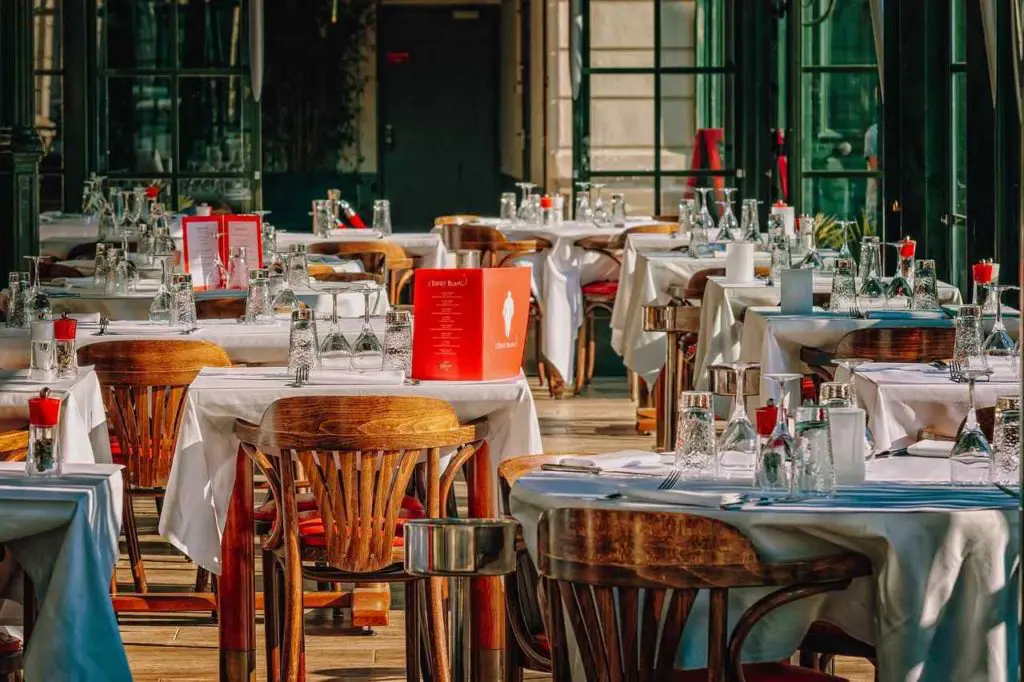
Again, this might sound obvious, but it’s far too easy to order something tasty when you’re eating out and forget about the nutritional values.
It’s normal to treat yourself when you eat at a restaurant at home right? The temptation is to do the same when you’re away.
Get Into A Routine Of Healthy Ordering
There’s nothing wrong with treating yourself when you’re away. The problem is you might find yourself eating out quite a lot.
If you want to keep eating healthy while traveling, you need to get into the routine of ordering healthy food at restaurants. Let’s say you’re on a long road trip, for example, you don’t want to resort to eating greasy, unhealthy (and overpriced) fast food for every meal.
Order Vegetables With Your Meal
Choose something healthy from the menu, preferably with vegetables.
These are often hard to come by whilst on the road. A restaurant cooking them freshly for you is a great means of getting the vitamins and minerals you need. You could substitute your fries for extra vegetables or salad, for example.
Embrace the Local Culture
When I travel, one of my favorite things to do is to try the local cuisine. As cheesy as it sounds, I thoroughly enjoy experiencing another culture and getting involved with the locals. Food and travel go hand in hand, after all.
When I’m abroad for long periods of time, I make a conscious effort to order the healthier options available to me, while still trying new foods.
Why not enjoy the local specials alongside a vegetable dish?
Research Restaurant Menus and Reviews
Researching restaurants in advance is a smart move. It helps ensure there is something healthy (and tasty) for you to order.
Check the menu for high-fiber options full of veggies and healthy fats.
Check TripAdvisor and Yelp for reviews and pictures from other travelers. These may help to determine if a restaurant has some interesting-looking healthy options.
6. Cook When You Can

No matter how hard you try, you can never beat home cooking, right? The same can be said for healthy eating; cooking for yourself is often a winner.
Whilst on the road, eating options can sometimes be limited. Preparing your own food can go a long way toward maintaining a healthy diet.
But how do you actually do this?
Booking Accommodation With a Kitchen
Well, for starters, try to book a hotel/hostel/Air BnB with a kitchen. This will allow you to prepare healthier meals.
I always make an effort to book somewhere where I can make my own food, as this helps me maintain as much of my normal routine and eating habits as possible.
Yes, there are healthy options in restaurants. But when you cook your own meals, you know exactly what is in them. You know the nutritional values of the foods you’ve prepared and there are no hidden ingredients such as preservatives, MSG, or excessive oil.
Take a Portable Stove
If you are on a road trip and plan to camp a lot, take a portable gas cooker so you can prepare healthy meals when you arrive.
Cooking your own meals when traveling is often much cheaper as well as healthier. It’s also a great excuse to get down to the local markets and check out the traditional delicacies! This is one of my favorite things to do in a new place.
Coleman Portable Butane Stove with Carrying Case
7. Stay Motivated and Don’t Stress
Trying to eat healthy while traveling is no easy task. I’ve failed a few times.
Bottom line?
One of the most important things you can do is to stay motivated, stay disciplined, and simply, don’t stress.
Stress Can Ruin Your Diet And Your Trip
Not only can stress cause digestive problems (it can hinder the breakdown of your food), it also makes for a poor traveling experience when you should be enjoying yourself!
Just do your best to eat healthily and follow these 7 steps.
How To Eat Healthily While Traveling – Your Turn
Which tip are you going to try first?
Do you have any more ideas on how to eat healthily while traveling?
Either way, leave a comment below and let us know!
More From The Road Trip Expert
Whilst you’re here…
We have some new Travel Tips articles you might be interested in including an awesome article on how to plan a trip. Feel free to check them out!
Disclosure: Some of the links in this article may be affiliate links. This means I earn a commission if you make a qualifying purchase, but this is at no additional cost to you. Thank you for supporting The Road Trip Expert.


